
AR/VR microdisplay core technology: silicon-based OLED
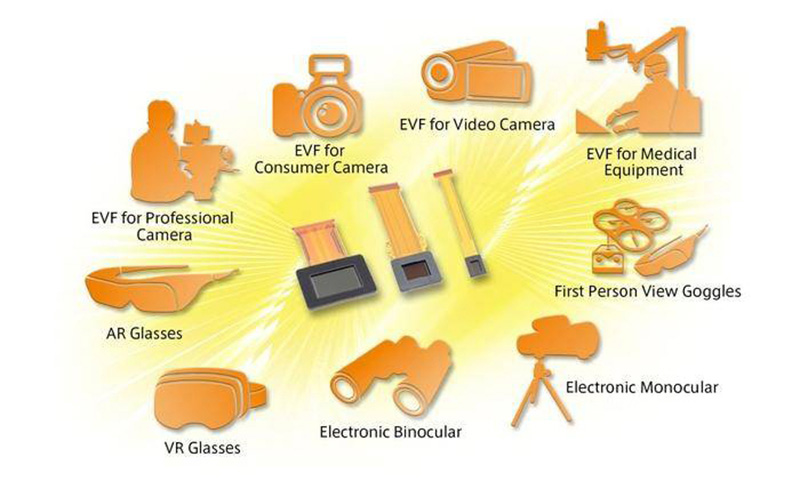
What is AR?
AR means Augmented Reality, that is augmented reality technology. This technology utilizes computer technology to overlay virtual information onto the real world, display it through mobile phones, tablet computers and other devices, and be perceived by people, so as to realize the integration of real and virtual and enrich the real world.In short, it is to "live" the two-dimensional content, give the physical object more information, enhance the three-dimensional sense, and enhance the visual effect and interactive experience.
What is VR?
VR is Virtual Reality or also called Spirit Realm Technology, with characteristics of immersion, interactivity, and conceptualization. VR technology integrates various technologies such as computer graphics, simulation technology, multimedia technology, artificial intelligence technology, computer network technology, parallel processing technology,multi-sensor technology and other technologies to simulate the functions of human vision, hearing, touch and other sensory organs, making people It feels like being there and immersed in a computer-generated virtual world,which can communicate in real-time through language, gestures, etc., enhancing the sense of entry and immersion. Through VR technology, people can not only experience the realism of the real world, but also break through the limitations of time and space, and feel the wonderful experience of entering the virtual world.
What is micro oled display:
Silicon-based OLED microdisplay is an active organic light-emitting diode display device that integrates electronic technology, optical technology, material technology and semiconductor technology, combines CMOS technology and OLED technology, using monocrystalline silicon as an active driving backplane. The mono-crystal silicon chip adopts mature integrated circuit CMOS technology, and combines the outstanding advantages of OLED fast response, large viewing Angle, low power consumption, etc., which realizes not only the active addressing matrix of display pixels, but also the drive control circuit of various functions such as SRAM memory, T-CON, and so on, reducing the external connection of the device. increase reliability and achieve lightweight; The pixel size is 1/10 of traditional display devices, and the precision is higher than traditional devices.
Silicon based OLED micro display is mainly used in near-eye display system, is the core device of near-eye display system, through the optical lens to achieve virtual image amplification effect.
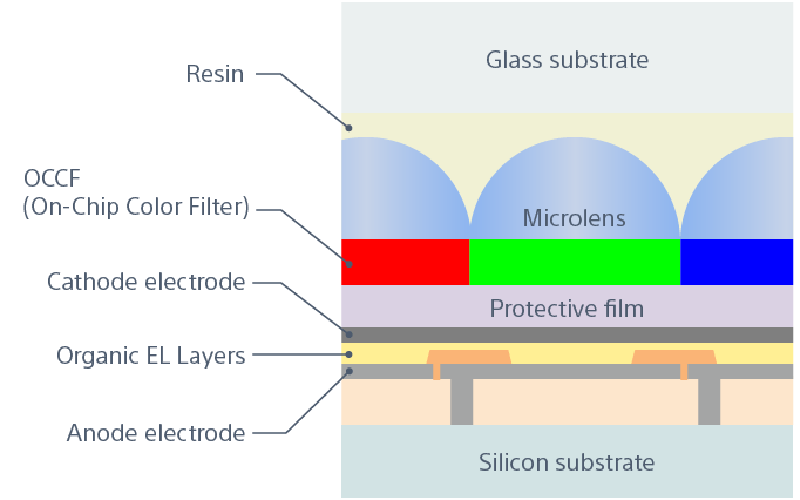
Micro oled Advantages:
OLED self-luminescence;high color gamut;rich color effect
High resolution,high display contrast up to 10,000:1;high PPI
fast response speed,wide operating temperature
High luminous efficiency, low energy consumption, 20% less than LCD function consumption.
High integration and Good shock resistance
Small size and light weight, easy to carry
Meanwhile, silicon-based OLED is an important branch of active organic light-emitting display AMOLED. silicon-based OLED display technology is with the following outstanding features:
1) The substrate chip adopts a mature integrated circuit process, and the manufacturing yield is much higher than LTPS technology.
2) The use of monocrystalline silicon, high mobility, stable performance, high life.
3) 200mm ×200mm OLED evaporation packaging equipment can meet the manufacturing requirements, unlike AMOLED need to pursue a high generation production line.
4) Silicon-based OLED microdisplays are small in size and provide near-eye display effects that can be comparable to AMOLED displays.
Micro OLED screens Lineup in Augmented Reality and Virtual Reality:
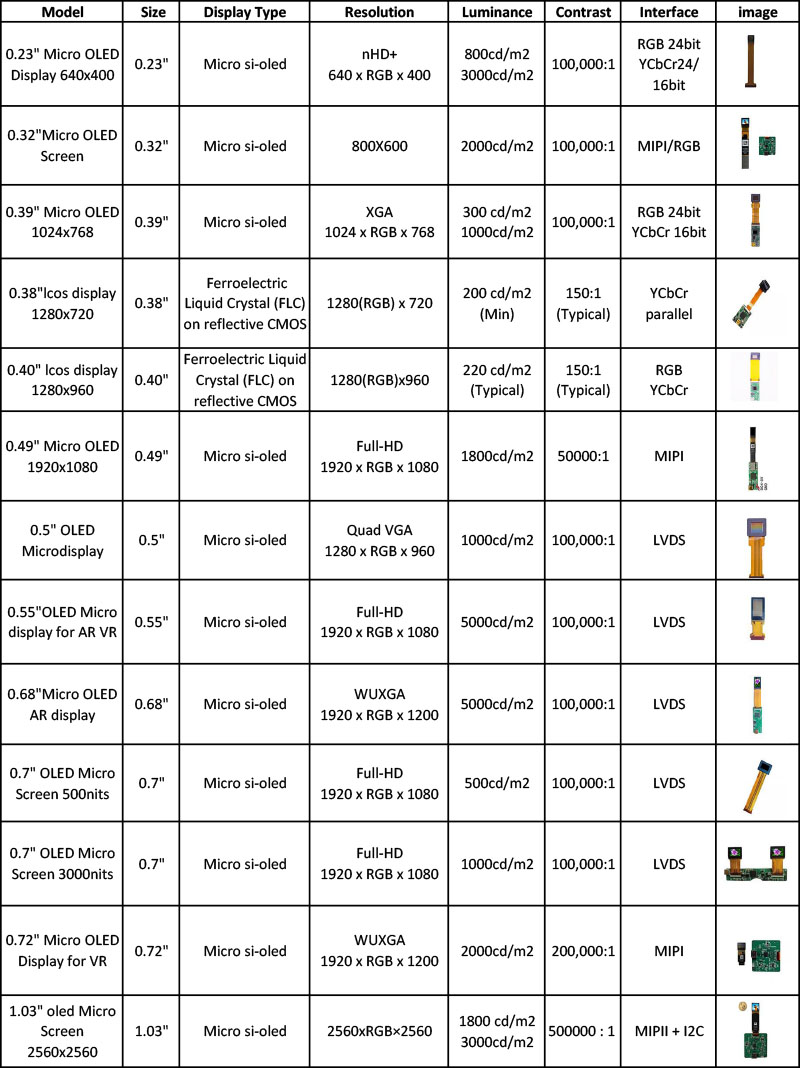
Micro OLED technology application in AR VR:
1. Military
The military field is the entry point for silicon-based OLED microdisplay related products in the early development stage,also become the fastest-growing field in the micro display market. Its applications mainly include aiming observation systems, helmet systems, and simulation training systems;thanks to its high manufacturing yield, stable performance, long lifespan, small size, and low power consumption, it has become the main solution for wearable displays such as helmet mounted displays, stereoscopic display mirrors, and eyeglass displays, gradually becoming a competitive point in the new display industry.
1) Aiming and observation system: sight, gunner's mirror, infrared thermal imager, fusion telescope, etc; The OLED micro displays with small size, light weight, low power consumption, low temperature resistance, strong seismic performance, and high refresh rate, are gradually replacing traditional CRT and LCD/LCoS applications in military aiming and observation systems;
2) Helmet System: Digital Individual System Integrated Helmet Subsystem, Aviation Helmet Indication System, etc. The US Army's "Land Warrior" digital individual system uses eMagin's OLED mini display paired with the Integrated Helmet Subsystem's Head Mounted Display (HMD). Through this display system, soldiers can view graphical data and digital maps sent by computers Intelligence information and imaging of thermal imaging weapon sights and cameras installed on weapons.
3)Simulation training system: practical simulation training system, etc. The head mounted binocular display produced using OLED micro displays can form large-sized 3D virtual images, and various tactical training can be directly carried out using computers.

2. Education:
AR brings a new vitality into children's education products with its rich interactivity, and developing educational products with AR technology is more suitable for children's physiological and psychological characteristics.Augmented Reality also plays an increasingly important role in school-age education, for some dangerous chemical experiments, complex mathematical and physical principles that can be quickly mastered by students through Augmented Reality technology.
AR technology has the ability to enhance the clarity, intuitiveness, and perceived impact of real-life situations, making situational learning more approachable, dynamic, and natural.
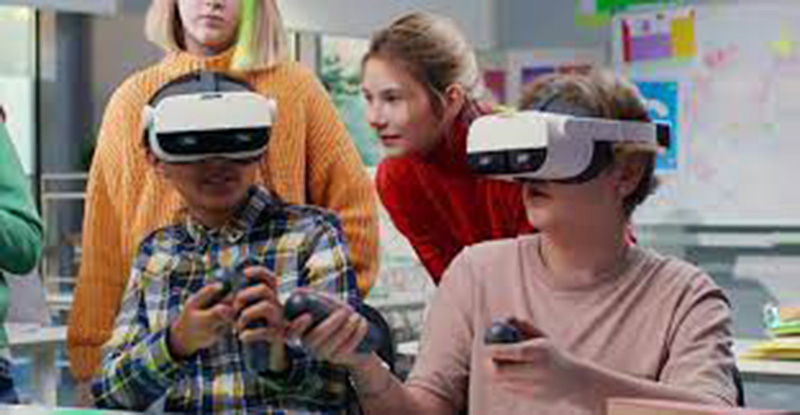
3.Health care
AR and VR technology is also increasingly used in medical education, patient analysis and clinical treatment, and more and more minimally invasive surgery uses AR (AR Glasses ) and VR (VR headset)technology to alleviate patient pain and reduce surgical risk.
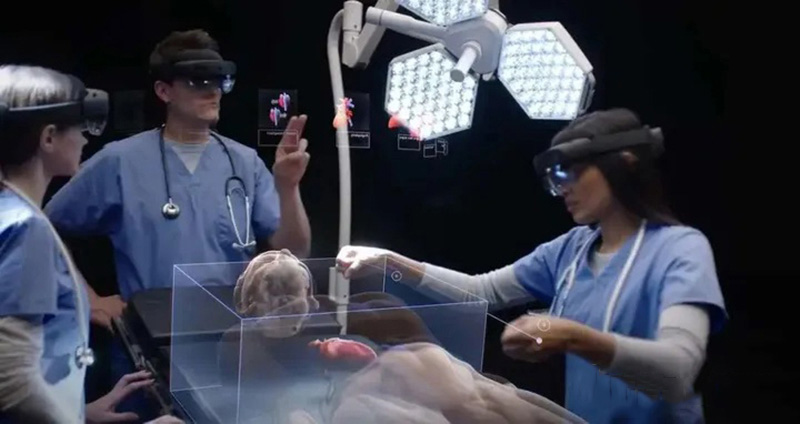
4.Game
AR/VR brings an immersive gaming experience to users, although VR/AR was originally developed as an innovative tool for the gaming industry, today it has a wider range of applications. Gaming with VR/AR technology has revolutionized the way people experience video games, and the gamification element of VR technology can also benefit many different businesses.
For example, Milan-based bank Widiba is already using VR technology. Through their interactive VR app, customers can walk around the bank, make transactions, check their current balance, and interact with assistants.
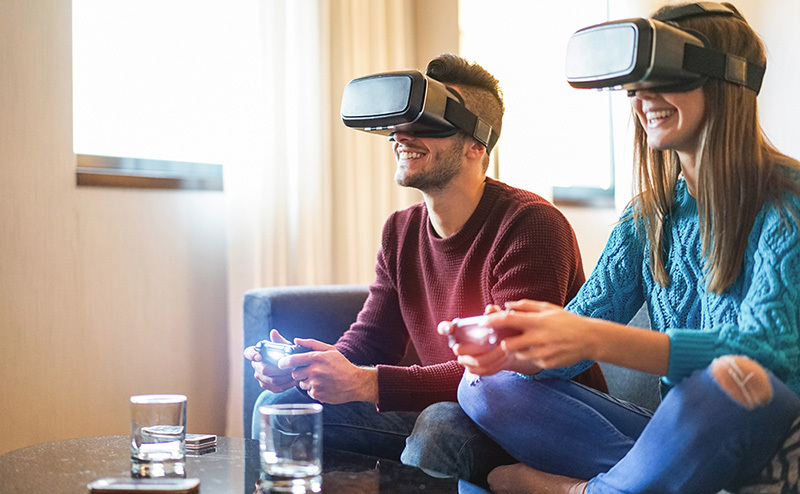
5.Information retrieval
Augmented reality technology will gather relevant information about the item from different directions according to the user's needs and display it in real-time in the user's field of vision. In the future, people can recognize the person's credit and some public information by scanning their face to prevent being deceived. The implementation of these technologies greatly reduces the chances of being deceived and facilitates users to work quickly and efficiently.
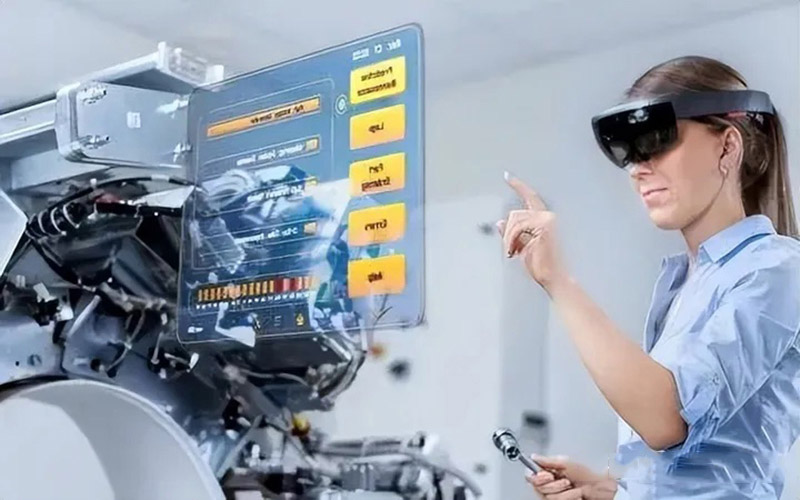
6. Industrial design interaction
The most unique aspect of augmented reality technology lies in its high degree of interactivity. It can be partially controlled to achieve virtual simulation, simulate assembly situations or daily maintenance, disassembly and assembly work, learn in the virtual environment, reduce manufacturing waste and the cost of talent training, greatly improve the design system, shorten design time, and improve efficiency.

7.Scientific exploration in space
Astronauts from the International Space Station and researchers from NASA also use VR technology for scientific investigations in space, especially on the surface of Mars. Their experience has shown that VR has improved the accuracy of missions in determining angles between specific Martian regions.

The 3DCAT Metaverse real-time rendering cloud platform provides self-developed CloudXR technology to transmit high-fidelity virtual reality or augmented reality scenes to terminal devices in real time. Whether it is a PC, mobile phone, tablet or head-mounted display,users can feel immersive virtual reality and augmented reality only through the Internet. Achieve a more efficient and convenient interactive experience, and realize real-time rendering services for AR/VR applications.
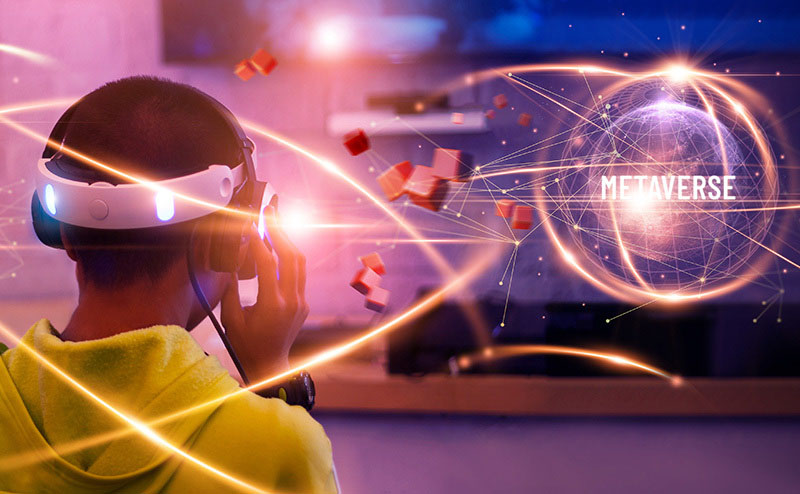
Name: Alex Chiang
Mobile:+8613045875060
Tel:+8613045875060
Email:Alex@jekedisplay.com
Add:PuDongXinQu, Shanghai,China